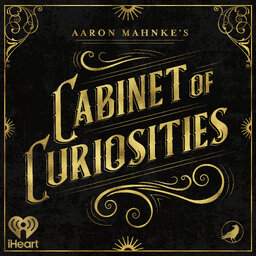Mourning
Sometimes our tour through the Cabinet introduces us to tales of loss and letting go. Other times, we encounter events that are are simply too amazing to be true. This is one of those tours.
Learn more about your ad-choices at https://www.iheartpodcastnetwork.com
 Aaron Mahnke's Cabinet of Curiosities
Aaron Mahnke's Cabinet of Curiosities


